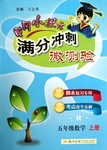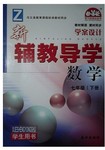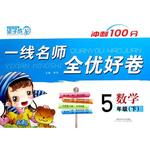题目内容
Imagine a world without trees. What if the rainforests and all of the plants and animals suddenly did not exist? In 1962, Gaylord Nelson decided something needed to be done to protect the environment. The work that he began led to what we now know as Earth Day.
Mr. Nelson realized very few people were concerned about environmental problems. He then went to Washington, D.C., where he hoped to persuade President Kennedy to take a stand on environmental problems. It wasn’t long before President Kennedy agreed that action should be taken. The president set out on a five-day, eleven-state conservation(保护自然资源) tour in September of 1963. Although Kennedy’s tour was not a success, Mr. Nelson was not ready to give up.
Mr. Nelson continued to speak to people across 25 states about the importance of the environment. Although his point of view began to be accepted by most people, politicians (政治家) were still not listening.
In September of 1969, at a meeting in Seattle, Mr. Nelson announced that he would hold a nationwide demonstration (游行) for environmental protection the next spring. On April 22, 1970 (the first Earth Day), more than 20 million Americans took part in the demonstration. It made people sit up and pay attention to environmental problems. One year later, the UN signed(签署) an announcement making Earth Day an official international holiday. Now, Earth Day is celebrated each year around the world, and more and more people begin to realize the importance of protecting the environment.
59. The main idea of the second paragraph is that _______.
A. Mr. Nelson tried to win the support of the government to protect the environment.
B. President Kennedy made a successful conservation tour.
C. Mr. Nelson prepared for the nationwide demonstration.
D. few people realized the importance of protecting the environment.
60. When did Earth Day become an official international holiday?_________
A. In 1963. B. In 1969. C. In 1970. D. In 1971.
61. In which order did the following events happen?__________
a. Mr. Nelson made speeches about the importance of environment across 25 states.
b. Mr. Nelson went to Washington, D.C.
c. The first Earth Day was celebrated
d. President Kennedy set out on a conservation tour.
A. b-a-d-c B. b-d-a-c C. a-b-d-c D. a-b-c-d
62. The best title for the passage would be “___________”.
A. Mr. Nelson-----A Great Environmentalist.
B. How to protect the environment.
C. Importance of Environmental Protection.
D. History of Earth Day.
ADBD

 小天才课时作业系列答案
小天才课时作业系列答案 一课四练系列答案
一课四练系列答案 黄冈小状元满分冲刺微测验系列答案
黄冈小状元满分冲刺微测验系列答案 新辅教导学系列答案
新辅教导学系列答案 阳光同学一线名师全优好卷系列答案
阳光同学一线名师全优好卷系列答案 Imagine yourself on a boat looking out at the horizon and all you can see is the water meeting the sky with no land in sight and you are sailing straight ahead to meet the world. Jesse Martin does not have to imagine: he is living in it.
On Dec. 7, 1998, at 17 years old, Jesse set sail from Melbourne, Australia on his boat, attempting to become the youngest person to sail alone and nonstop around the world. He sailed south of New Zealand, through the South Pacific, around South America, north on the Atlantic, back south past Africa, through the Indian Ocean and back to Melbourne.
Even as a young child, Jesse had been an adventurer who traveled all over Europe and Asia with his parents. Born in Munich, Germany in 1981, he moved to Australia with his family when he was only two years old. They moved close to a rainforest in Cow Bay, about 3500kms north of Melbourne, where they built a small house with no electricity or running water. Jesse grew up at the beach enjoying the outdoors to its fullest.
At 14, he sailed for the first time with his father and brother, Beau. It was after this trip that he began to dream about sailing around the world.
Jesse’s family played an important role. “I was made to believe I could do anything.” he says. Although, he says, there were others that were not so encouraging or supportive, “People that I looked up to, respected and trusted told me I couldn’t. Thankfully, I trusted myself. There were people that said that the boat couldn’t be ready by the time I had to leave.” However, through perseverance and belief in himself he was able to do what many told him was impossible.
On Oct.31, 1999, more than 10 months after he set sail, Jesse Martin went down in history as the youngest person to sail around the world alone, nonstop and unassisted.
【小题1】 What’s the author’s purpose in encouraging the reader to imagine a sailing experience?
| A.To show how difficult it is to be a sailor. |
| B.To show how wonderful Jesse’s sailing is. |
| C.To describe what Jesse’s sailing is like. |
| D.To describe what a sailor’s life is like. |
| A.sailed on the South Pacific. |
| B.sailed on the Indian Ocean. |
| C.sailed past Africa |
| D.sailed past South America. |
| A.His childhood adventure experiences. |
| B.His journeys to Europe. |
| C.His first sailing trip with his family. |
| D.His love for outdoor activities. |
| A.Interest leads to success. |
| B.A strong belief will make a person stronger. |
| C.Life is an unusual adventure we should enjoy. |
| D.Failure is the mother of success. |
Imagine yourself on a boat looking out at the horizon and all you can see is the water meeting the sky with no land in sight and you are sailing straight ahead to meet the world. Jesse Martin does not have to imagine: he is living in it.
On Dec. 7, 1998, at 17 years old, Jesse set sail from Melbourne, Australia on his boat, attempting to become the youngest person to sail alone and nonstop around the world. He sailed south of New Zealand, through the South Pacific, around South America, north on the Atlantic, back south past Africa, through the Indian Ocean and back to Melbourne.
Even as a young child, Jesse had been an adventurer who traveled all over Europe and Asia with his parents. Born in Munich, Germany in 1981, he moved to Australia with his family when he was only two years old. They moved close to a rainforest in Cow Bay, about 3500kms north of Melbourne, where they built a small house with no electricity or running water. Jesse grew up at the beach enjoying the outdoors to its fullest.
At 14, he sailed for the first time with his father and brother, Beau. It was after this trip that he began to dream about sailing around the world.
Jesse’s family played an important role. “I was made to believe I could do anything.” he says. Although, he says, there were others that were not so encouraging or supportive, “People that I looked up to, respected and trusted told me I couldn’t. Thankfully, I trusted myself. There were people that said that the boat couldn’t be ready by the time I had to leave.” However, through perseverance and belief in himself he was able to do what many told him was impossible.
On Oct.31, 1999, more than 10 months after he set sail, Jesse Martin went down in history as the youngest person to sail around the world alone, nonstop and unassisted.
1. What’s the author’s purpose in encouraging the reader to imagine a sailing experience?
|
A.To show how difficult it is to be a sailor. |
|
B.To show how wonderful Jesse’s sailing is. |
|
C.To describe what Jesse’s sailing is like. |
|
D.To describe what a sailor’s life is like. |
2. Jesse Martin was at the end of his voyage when he _______.
|
A.sailed on the South Pacific. |
|
B.sailed on the Indian Ocean. |
|
C.sailed past Africa |
|
D.sailed past South America. |
3. Which of the following made Jesse decide to sail alone around the world?
|
A.His childhood adventure experiences. |
|
B.His journeys to Europe. |
|
C.His first sailing trip with his family. |
|
D.His love for outdoor activities. |
4. What can we learn from Jesse Martin’s story?
|
A.Interest leads to success. |
|
B.A strong belief will make a person stronger. |
|
C.Life is an unusual adventure we should enjoy. |
|
D.Failure is the mother of success. |